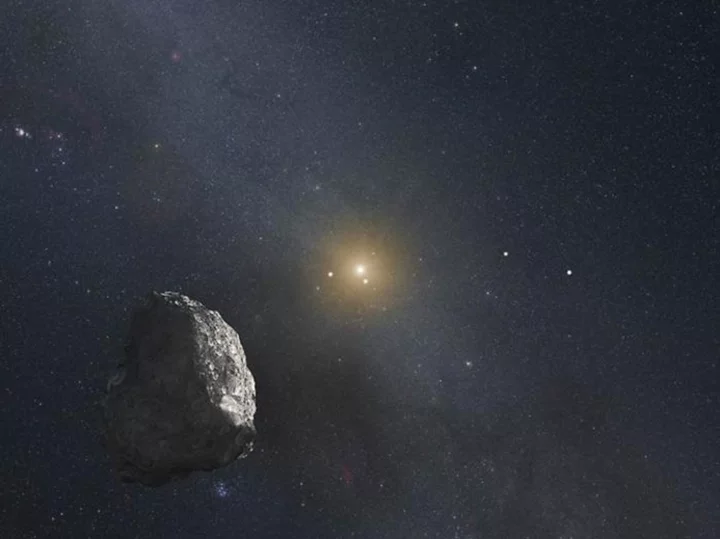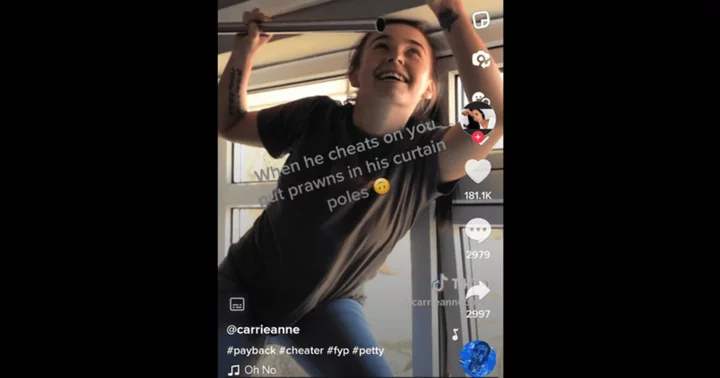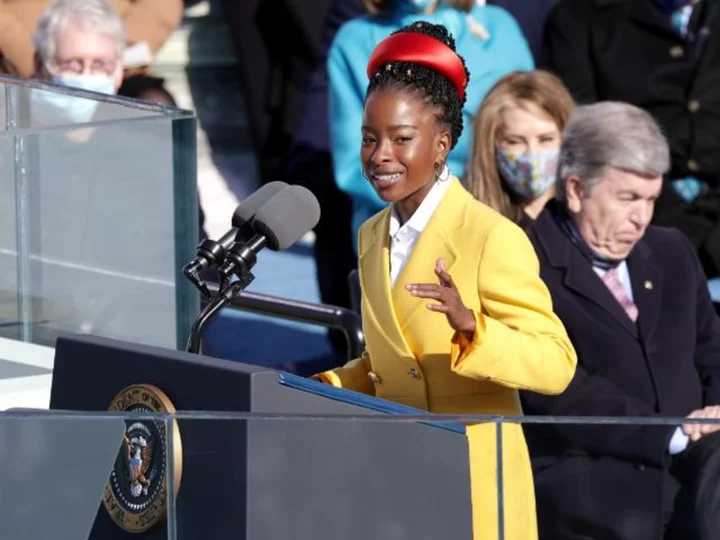
Square Go, Square’s New Booking App, Seamlessly Connects Consumers with Beauty and Personal Care Businesses
SAN FRANCISCO--(BUSINESS WIRE)--Aug 8, 2023--
2023-08-09 00:30

‘Planet Nine’ hidden world at the edge of our solar system could actually be something else, scientists say
A supposed “planet nine” that lies hidden at the edge of our solar system could actually be something else entirely, according to scientists. The unexplained movement of objects at the edge of our solar system has led some to propose that they are being influenced by another world, hidden in the dark distance of our planetary neighbourhood, that they have referred to as planet nine. Objects at the far reaches of the solar system behave as if they are being pulled around by an object that we cannot see, which is probably another planet, they suggest. But a new study by researchers Harsh Mathur, a professor of physics at Case Western Reserve University, and Katherine Brown, an associate professor of physics at Hamilton College, say that those movements are instead the result of a modified law of gravity. The scientists plotted what would happen if the objects were being governed by a theory known as Modified Newtonian Dynamics or MOND. That suggests that Newton’s usual gravity only works up to a point – that in the outer regions of galaxies, for instance, gravity behaves in unusual ways. They found that the data lined up, and applying the MOND theory to the existing observations seemed to predict them exactly. “The alignment was striking,” said Professor Mathur. They note that the findings do not necessarily rule out planet nine – or another explanation for what is going on. Some researchers have suggested other explanations for what the objects could be, for instance, while others have suggested that the claimed effect is just the result of when the distant objects tend to be observed. “Regardless of the outcome, this work highlights the potential for the outer solar system to serve as a laboratory for testing gravity and studying fundamental problems of physics,” said Professor Brown. The findings are reported in a paper, ‘Modified Newtonian Dynamics as an Alternative to the Planet Nine Hypothesis’, published in The Astronomical Journal. Read More Watch live: Amazon launches first internet satellites aiming to rival Starlink Stargazing in October: A sleeping giant Prada to design Nasa’s next-gen space suits for Artemis astronauts
2023-10-07 01:52

Macnica provides motor-specific predictive maintenance services in Asian countries : Mpression Smart Motor Sensor in ASEAN
YOKOHAMA, Japan--(BUSINESS WIRE)--Jun 15, 2023--
2023-06-16 11:15

Apple iPhone 15 Pro and Pro Max review: Close to perfection
Buying a new phone will likely have you thinking about two types of features: On
2023-09-19 21:16

Elon Musk’s X Corp sued by another social network company named X
Elon Musk’s X Corp, the company formerly known as Twitter, is being sued by another social network also named X, a lawsuit filed in a federal court revealed. The lawsuit, filed by a Florida-based ad agency X Social Media LLC, alleged that the popular social media platform violates Florida common law because of “unfair competition and trademark and service mark infringement”. It also accused the company owned by Mr Musk of violating Florida’s Deceptive and Unfair Trade Practices Act (FDUPTA). The accusing company said it has existed in the American state with its registered trademark as “X SOCIALMEDIA” continuously since 2016. It said it has existed as “a vanguard in utilizing social media and marketing technology to connect consumers with legal services in situations where those harmed would otherwise remain voiceless and without remedy”. The Florida-based company, founded in 2015 by entrepreneur Jacob Malherbe, said its “distinctive” and “dominant” letter “X” is used to signify the beginning of a life-changing journey towards justice. The ad firm said its ”X” mark is successfully associated with its social media advertising services, adding that it has invested “over $2m to date” in building brand awareness and reaching consumers. It argued that it has “already suffered loss in revenue that correlates with X Corp’s rebrand and use of the mark ‘X’.” “In addition to the symbolic emphasis of the ‘X’, X Social Media frequently emphasizes the ‘X’ portion of its mark throughout its advertising, blogs, and newsletters highlighting its work,” the company said. “X Corp’s use of the ‘X’ mark and recent attempt to register the mark in association with social media, business data, promotion and advertising, business consulting, market research services, and advertising services necessitates this action because its conduct has caused and will continue to cause serious irreparable harm to X Social Media,” the ad agency says. It remains to be seen how X Corp would respond to the lawsuit. X Corp did not immediately respond to The Independent’s request for comment. Read More Elon Musk facing defamation lawsuit in Texas over posts that falsely identified man in protest Elon Musk mocked by Ukraine’s parliament over tweet taunting Zelensky Elon Musk to live stream himself gaming on X in ‘everything app’ bid Elon Musk to live stream himself gaming on X in ‘everything app’ bid Musk confirms he is cutting election integrity staff from X/Twitter ahead of 2024 Reddit will start paying people to post
2023-10-03 12:58

Capture cherished moments: Celebrate Mother's Day with 50% off Kodak instant cameras
Unleash the magic of Mother's Day by capturing unforgettable moments with up to 50% off
2023-05-10 23:52

Who is Dr Miles Stones? 'Fire and Fury' author sparks outrage with book released two days after deadly Maui fires
'Fire and Fury: The Story of the 2023 Maui Fire and its Implications for Climate Change' was published two days after the fires started on August 8
2023-08-17 17:57

Twitter adds video calling – and lets strangers ring you
Twitter has added video calling – and left it turned on by default. The feature is now being officially rolled out, Elon Musk confirmed. He said it was an “early version” of a tool he has been hinting at for a year. Video calls are part of Elon Musk’s plans to make Twitter, which he has renamed X, into the “everything app”, offering a wide array of different functionality. For now, video calls are limited to the iOS app, and appear to be rolling out slowly. But they are also switched on by default. The system means that all accounts are liable to receive calls from accounts you follow, or those run by people whose number you have in your address book. To be able to call someone, they must have sent at least one direct message to your account. Users have the option to change that setting, however, either to switch it off or to change who has the ability to make calls. From the direct message settings, users can either disable it entirely or change it so that they can receive calls from people in your address book, from people you follow, or from all “verified” users. Making phone calls is limited to premium subscribers, who pay the monthly subscription for what was once called Twitter Blue. It can be done by opening up the DM menu to start a conversation with someone. If the feature is enabled, then a phone icon should show within the direct message conversation, and tapping audio or video will start the relevant kind of call. Users will receive a notification that they are being called, and will get another telling them they missed the call if they do not pick up. Read More The Twitter app just went very, very strange TikTok prankster Mizzy arrested ‘on suspicion of perverting course of justice’ Study finds ‘deepfakes’ from Ukraine war undermining trust in conflict footage
2023-10-26 23:59

Save 83% on this streaming-friendly VPN
SAVE 83%: CyberGhost VPN is a top choice for unblocking streaming sites like Netflix and
2023-07-07 12:20

Google faces £7 bn claim on behalf of UK consumers
Google is facing a new lawsuit in Britain, which accuses the US tech giant of stifling competition in the search engine market and causing prices to rise across the...
2023-09-07 20:50

TikToker exacts revenge on cheating boyfriend as she leaves stinky surprise for him
The woman also snipped off the ends of her boyfriend's socks and removed the batteries from all remote controls
2023-05-28 17:17

Mullvad VPN Review
VPNs protect your web traffic from being snooped on and make it harder for spies
2023-05-18 04:56
You Might Like...

Mercedes adds ChatGPT to its cars to make them chattier

Miami-Dade school moves Biden inaugural poem out of elementary section of library after complaint

Meta takes aim at Twitter with new Threads app

Netflix is finally rolling out video game streaming

UAE’s Falcon 40B Dominates Leaderboard: Ranks #1 Globally in Latest Hugging Face Independent Verification of Open-source AI Models

How tall is xQc? When fans speculated Kick streamer to be 'anorexic' after comparing his height to weight

Aliro Quantum Expands C-Suite With New Product Executive To Accelerate Momentum For Quantum Networks

Cyberattack is a factor in Illinois hospital's closure
